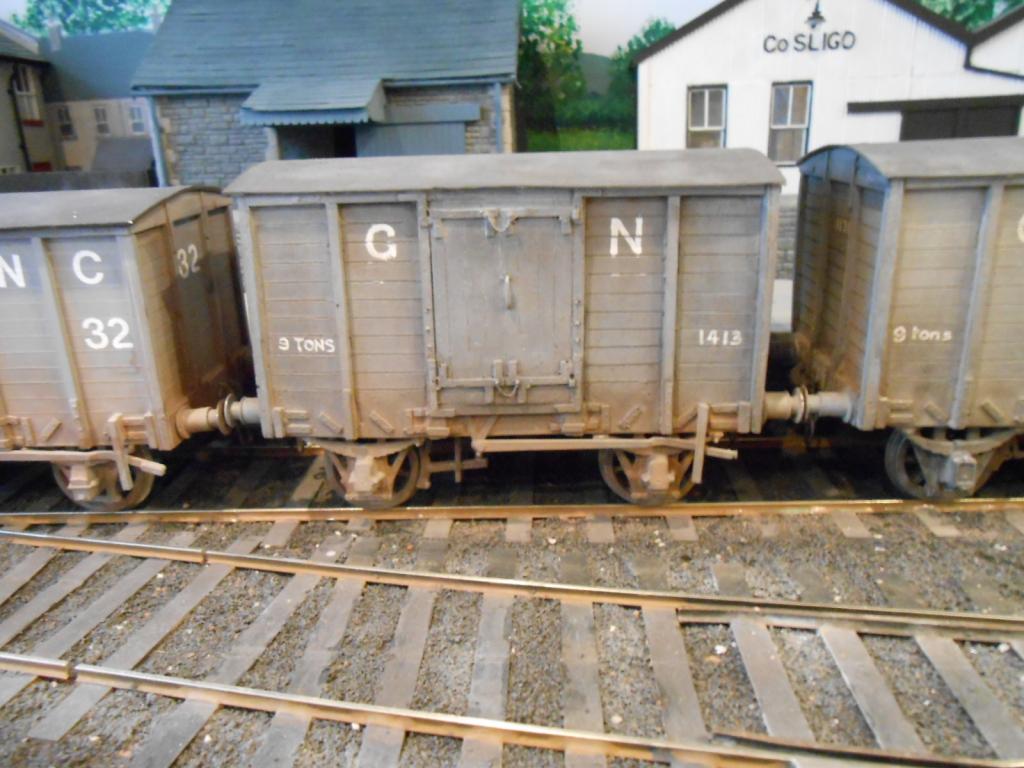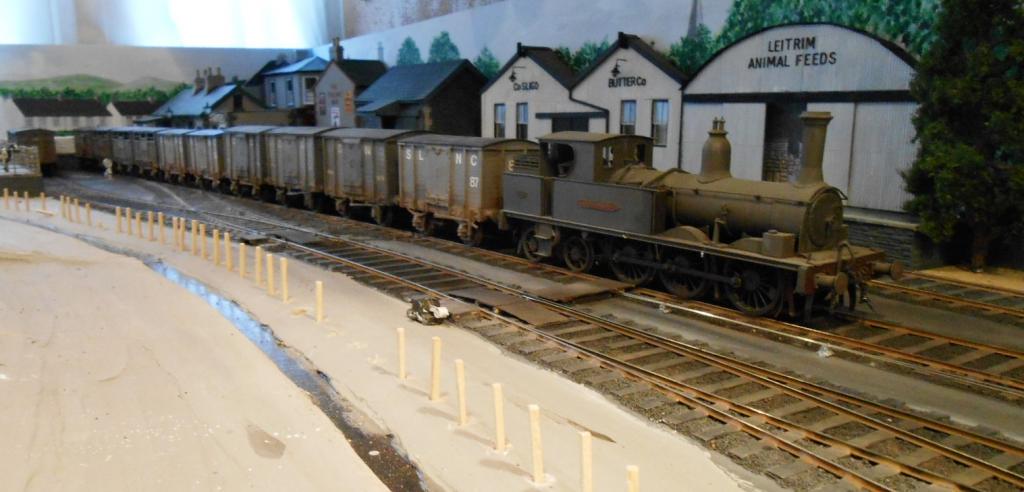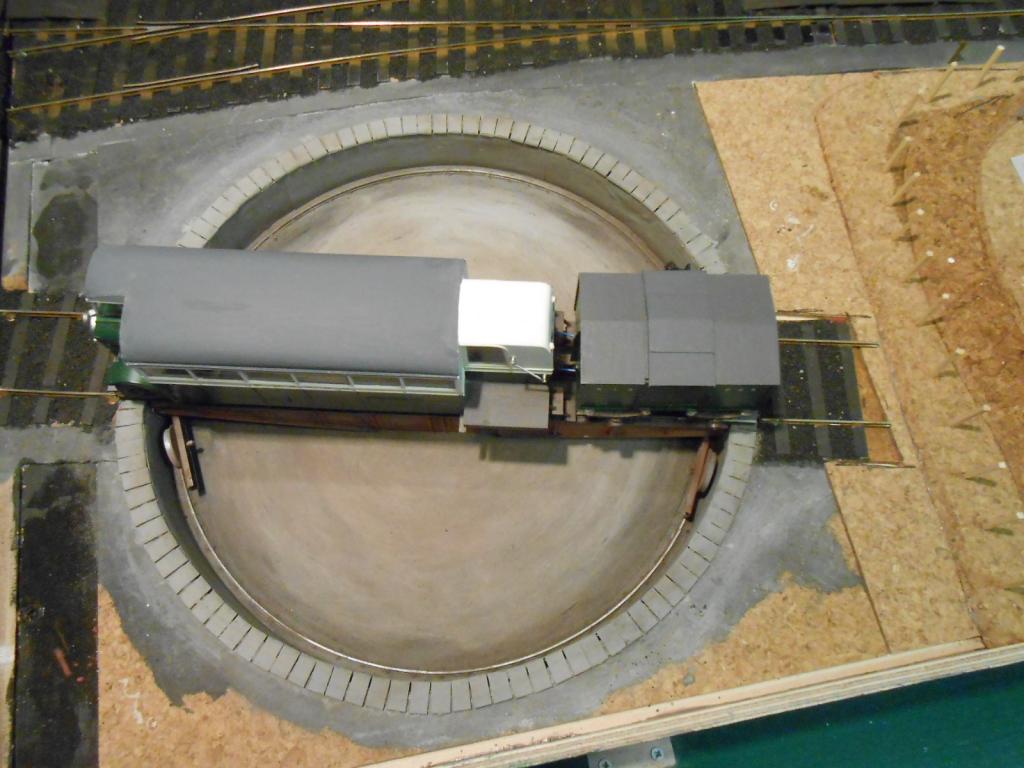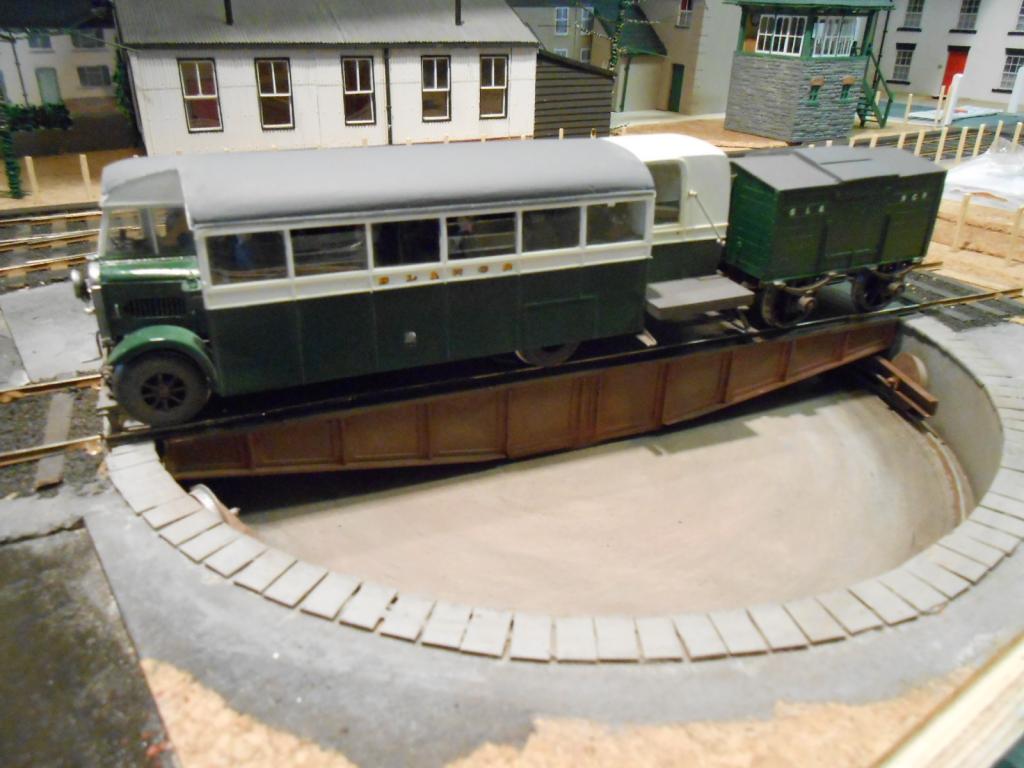
David Holman
-
Posts
3,721 -
Joined
-
Last visited
-
Days Won
100
Content Type
Profiles
Forums
Resource Library
Events
Gallery
Blogs
Store
Community Map
Posts posted by David Holman
-
-
Looks the absolute business.
Very minor niggle, I'm pretty sure the Gilroy Guinness (toucan on a weather vane) ad as depicted was intended to be a printed framed poster rather than an outdoor enamel sign.
I'm aware there were later cheap tin versions produced, mainly for tourist souvenirs or pub decor.
http://jacquieverettdesign.wordpress.com/guinness-advertising/
There was a walking toucan toting a pair of pints produced as a hanging sign, but think that may be a later 60's/70's item.
http://farm4.static.flickr.com/3550/3834899456_bac7a78796.jpg
Now that's what I call trivia - much appreciated Minister. Reminds of a time years ago when operating a friend's layout of Groombridge. Very accurate model but got criticised by a viewer because the station garden did not have any runner beans growing & they were a feature of the time modelled. Needless to say, they were there the next time the layout went out...
Will see what I can do about the poster!
-
Thanks again. All ideas and comments appreciated, especially in terms of prototype fidelity. The combined knowledge out there is wonderful.
-
Screw both and get Exactoscale track and Marcway points.....
Very much agree!
peco track is fine for simplicity, geometry etc, but the sleeper spacing is wrong, being an amalgam of HO and OO. Works best with American outline.Marcway points are almost the same price as Peco and I can vouch for their robustness. They are also live frog and self isolating.
However, for a truly Irish appearance the only thing that works is 21mm...
By no means as scary as it sounds and Marcway will custom make points for a small premium over OO. Appreciate that for anyone starting off that OO seems more do-able, but consider 21mm in the long term as it sets the layout more than any other way can.
-
Many thanks once more for the positive comments. They are very encouraging to someone with no direct experience of the railway other than via photos. The idea of the Parkside van is very interesting, not least because I have several on my BR layout, so will definitely be checking the stock box.
While I appreciate the comments on detail, the vans ( indeed all my wagons) are far from state of the art. For example the brake levers are Parkside left overs while the brackets are no more than two pieces of 60thou micro strip. The bees are also cut down Parkside and the lever does not link to the brake gear, mainly because I'm not sure how.
The moral of all this is the good old three foot rule - actually more like 18" in my case - in that if it cannot be seen at that distance that you do not need to model it. I am guilty of including more, but it is hopefully that which contributes to the overall impression and or what stands out to you personally. For me the door chains matter, and the marks they make, so short bits of fuse wire, or strands of multicore, twisted up give a good idea of the chain. Barry Norman mentions this in one of his articles and it is so easy to include, in 7mm scale, anyway.
As for weathering, having previously extolled the virtues of Martyn Welch's book, have mainly used powders on the bodywork, though did put a wash of dirty thinners over a good rubdown with a glass fibre brush to highlight the wood grain. Freestone Models do a very nice powders set, but there are others. However for underframes you can't beat Martyn's mix which is gunmetal and bauxite (Humbrol 53 and 133) plus a little grey or black.
Hope this encourages others to add a little extra detail of their own, for there really is nothing difficult here that a bit patience can't overcome.
-
Very nice indeed - love the roadside tramway concept.
Re the rubberised horsehair, in the absence of the proverbial runner horse, then industrial type floor scourer pads are a good substitute. As an ex teacher [& indeed headteacher], a chat with the caretaker produced an new circular pad, about 50cm in diameter, which I've been using for years. That said, the other varieties mentioned work just as well.
Barry's book is still a great standby, while more recent works by Tony Hill and Gordon Gravett bring things up to date and are well worth having.
-
This is seriously useful stuff - thank you.
Humbrol is indeed still available [owned by Hornby now] and 64 is the colour for wagon grey and 133 for brown [bauxite], though the latter is a satin finish.
For quite a while though, I've been using Halford's automotive spray cans. These give a very even finish and their grey & red primers are ideal for wagons, especially in 7mm scale upwards. Add on the usual weathering and it works perfectly well.
-
VERY nice sir!
Dare I mention that Tyrconnel [alphagraphic catalogue] produce a 7mm J26, while there is a 7mm small tank also available again. Methinks you are very much doing the right thing in terms of gauge though. 21mm looks so much better than 16.5
-
While I have hopes that such devices may have the same impact as photo-etching & lost wax casting, I'm still happy making my own stuff, however tempting the idea of 'off the shelf' is from time to time.
Just remember - you are never alone with a clone! And if you can, check out Orphan black on BBC 3 and be very afraid...
-
Hear are a few pics of the 9 ton vans I've been working on. Three so far, using self made resin castings - see my blog for more details.
Have included pics here because wanted to show the difference in size between the GNRI vans and the SLNCR 7 ton ones. The latter were built by using the Alphagraphix card kit as a scale drawing, but am a little concerned that they are noticeably smaller than the GNRI ones - 7 ton v 9 ton capacity notwithstanding. Alphagraphix seem to have used the same outline for the cattle van kit, as well as their own GNRI van & [much as I value everything they do] have been concerned about this discrepancy for some time, so would welcome any further comments.

-
A wonderful resource and many fine photos in their own right
-
Could not agree more!
Colour is very much in the eye of the viewer and light, weather, weathering etc play an enormous part in how something looks. And that is before quality of film, memories etc kick in.
For me, livery needs to be generally right, but the many shades that paint became over its lifetime mean that unless one is going for a museum standard, it is not worth worrying over too much.
In any case scale colour is not necessarily the same as actual colour. Read the likes of Martyn's Welch and Ian Rathbone (professional model painters) and you soon learn that 'black' is a very difficult issue, but there are many colours in the Halfords range which work extremely well.
-
Any chance of my favourite railcar b
Have the drawings and a fair selection of pictures so Yes, will be having a go.
Railcars and indeed diesel locos are very complex things to model because of the many subtle curves and shapes. However, did a 7mm Wagon und Maschinbau railbus a couple of years ago, so am aware of the issues and the need for filler and abrasives!
Interiors a pain too and with big windows they need including. Am intending that the next item of motive power will be a second Small Tank, but all being well will start on B next year, so have already been thinking about how to best make the power unit. In 4mm scale a SPUD would be favourite but proper coupled drive unit is more practical in 7mm scale.
-
May I also suggest this is possibly the most useful thread ever. So many ideas and much amusement too.
My favourite 'proper' tools that I could not do without are a 7mm scale rule, snap off craft knife [only really need the tip, so when it gets blunt snap off a new one], fixed and portable anglepoise lamps, electric drills [one for drilling, one for slitting disks], GW models rivet press and an RSU soldering station with a foot operated switch - saves much burning of fingers and resulting curses.
-
Have also seen eyeliner used to colour the edges of cardboard kits. eg Metcalfe.
Indeed, methinks were a very much in touch with our female side. Among the many things I've acquired there is/are:
- hair grips, v useful for holding bits to be soldered
- hairspray: cheapest & stickiest. Used for holding crumb/flock/static grass for trees & ground cover
- baby powder: wonderful for toning down models. Try a light dusting - works a treat
- emery boards: great for cleaning up metalwork
- Shiny Sinks cream cleaner: essential when scrubbing off flux after soldering brass or nickel.
Equally I also use Birchwood Casey Gunblue, which is a very effective metal blackening agent. Helps me feel more butch, though opened the door the other day wearing my Gauge 0 Guild [say it quickly] green apron, with aforesaid logo and frightened the bejaysus out of the postman. Apron was a birthday present from my wife I might add and is VERY useful for catching small parts that ping off the workbench, as well as keeping paint off clothes of course...
-
Some fascinating discussion here - thanks everyone!
Interesting [& a tad frustrating that John mentions Drumkeeran as a line through there [as a pure SLNCR route] was proposed in 1905... Frustrating because did not go that way on my field trip in June. Will have to travel by Google again.
Also, according to my much thumbed Railway Atlas of Ireland [Maxwell Hajducki], this could have used the Creveela Ironworks tramroad of 1852 for a [short] part of the route. My love of maps now tempts me to mock up the Drumkeeran line [can still call the terminus Arigna, of course]. However, would have to have the SLNCR acquire and E class 0-6-0 to work the coal trains - or perhaps the GSR might have offered anyway???
-
Thank you kind sir.
Have been pondering over the cantilevered walkways, not least because it is a scale 4' drop into the pit! However, not done it yet as the deck is only 40' long [including extension rails], which I'm concerned might cover much of the rest of the well - in which case a solid top would have made more sense. The deck is planked now though. Perhaps I'll do just one side.
As for the layout name, check out my Blog, as have recently penned a full history [with maps]. A bit sad, but it does help me set the scene and work out the traffic & hence stock I need to build.
-
There is a school of thought which suggests we often model what we saw in our formative years. Hence BR steam-diesel overlap worked for me & I still prefer green diesels to blue ones & Brunswick green to apple or malachite on steamers. GNRI blue is just fabulous.
However, given the availability of off the shelf stuff these days, then the opportunity to model almost anything that takes our fancy is there for the taking. Personally, I have always tended to look for something different and being a builder rather than an operator, increasingly find the Irish scene, in all its forms, increasingly interesting. Only the ultra modern leaves me cold with its DMUs and other railcars, plus little variety in the way of freight. Early railbuses and DMUs are a completely different matter for reasons I cannot explain!
-
Looks very good to me & encouraging 21mm gauge can only be a good thing. Needless to say I'd be very interested in something blown up to 7mm scale, but guess I'm in a very small minority...
-
Have been working on two turntables - one for locos and railbus, the other a full train version in the fiddle yard. The loco turntable is a much adapted Dapol/Airfix plastic kit, while the train table is mostly MDF.
The other pic shows the recently completed cattle dock fencing. Around 60 posts, each drilled 6 times to take the horizontal bars [0.8mm piano wire], so it was a somewhat repetitive process. Will put further details of all three in my blog next week, though you can read about why the project now has a name this week.

-
 1
1
-
-
The 'bible' for all things weathering is Martyn Welch's book 'The Art of Weathering' [Wild Swann pubs]. First issued a few years ago, it has never been bettered & Martyn's genial prose makes everything seem achievable. He also tells us what colours to use for each job - mainly Humbrol enamels. Eg No53 [Gunmetal] and 133 [bauxite], plus a little matt black and or leather is perfect for the generic 'underframe dirt' and variations enable oily bits to be done too. he book not only covers locos, but also open wagons, vans, coaches and the ubiquitous BR steel mineral, with rust being done the right way - ie put on first & then [with some Maskol] the top coat on top. It is my most read/used book of all time & I always go back to it whenever the paint or airbrush needs using again.
Still in print, you will not regret buying a copy.
-
Many thanks for all the positive comments, they are much appreciated. I also think that sharing one's work, either at the local model club or on sites like this is sort of akin to proof reading. In my teaching days, the kids could always spot my mistakes, but never their own, so if there are areas you think could be improved [or indeed simply wrong], please let me know - I will not be offended. Indeed it is the only way to improve our modelling, especially when so many of our subjects are now lost in the mists of time.
-
There is no doubt that Static Grass is the way to go. I have a proper 'Grass master' and a tea strainer variant and both are fabulous. Gone are the days of laboriously planting sisal, teddy-bear fur etc. With a bit of hair spray and PVA one can build a significant depth of grass in minutes. Gordon Gravett's books on trees shows how static grass can make very convincing conifers too, while his new book due out shortly [Wild Swan pubs] will detail all you need to know about grass and weeds. Check out his Pempoul layout too - just fabulous.
'Crumb' and other fibres still have their place for specialist uses, but static, especially the electric applicators is the way to go. Not cheap, but a fine investment. Share with a friend if you can't afford one outright.
However, having recently heard that cheap mascara pencils are very good for covering the bare edges of Metcalfe card kits, I occasionally worry what my wife thinks about my shopping habits. Extra strong hair spray, teddy bear fur, mascara pencils hair clips [good for soldering & gluing]. Whatever next?
-
VERY, very nice. One day in 7mm perhaps?
-
The Jeep and the S look rather fine & splendid. Wheels suggest P4 or even S7, though an S in full regalia is fab in any scale in my humble opinion. Will look out for more
.png.c363cdf5c3fb7955cd92a55eb6dbbae0.png)







Ixion Hudswell Clarke 0-6-0T
in Questions & Answers
Posted
Does anyone know if this loco can be adapted to 36.75 mm gauge. Just got a copy of Colin Boocock's Locomotive Compendium of Ireland and on p44 it shows a J28 Hunslet which is very similar. RTR models being still fairly rare in 7mm scale, with Irish ones even rarer, strikes me that this would make a nice introduction to doing broad gauge. The prototype ran on the Timoleague and Courtmacsherry tramway and at Fenit too. Would make a nice mine engine for my Arigna Town model if conversion is a easy option and £225 for a sweet running little engine is good value.